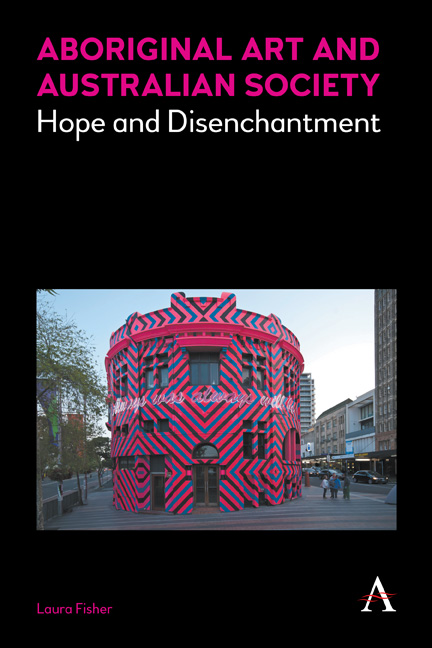Book contents
- Frontmatter
- Dedication
- Contents
- Preface and Acknowledgements
- Introduction
- Part I Governance, Nationhood and Civil Society
- Part II Contemporary Aboriginal Art in the 1980s
- Chapter 6 The Emergence of Aboriginal Art in the 1980s
- Part III Negotiating Difference
- Part IV Aboriginal Art, Money and the Market
- Conclusion
- Notes
- References
- Index
Chapter 6 - The Emergence of Aboriginal Art in the 1980s
from Part II - Contemporary Aboriginal Art in the 1980s
Published online by Cambridge University Press: 22 July 2017
- Frontmatter
- Dedication
- Contents
- Preface and Acknowledgements
- Introduction
- Part I Governance, Nationhood and Civil Society
- Part II Contemporary Aboriginal Art in the 1980s
- Chapter 6 The Emergence of Aboriginal Art in the 1980s
- Part III Negotiating Difference
- Part IV Aboriginal Art, Money and the Market
- Conclusion
- Notes
- References
- Index
Summary
In the 1980s the Australian arts sector was reaping the benefits of the 1970s policy initiatives of the Whitlam Labor government. Several state galleries had expanded their spaces and, as was flagged in Burn's article, the new Australian National Gallery was launched (by the Queen) in 1982 (its name was changed to National Gallery of Australia in 1992). Art auction house Sotheby's Australia was established in the same year. Corporate investment in art increased throughout the 1980s and there was a boom in the Australian art market (Van den Bosch 2005, 63–64; Huda 2008, 103–107). At the same time, a growing number of tertiary education institutions began offering art courses, which produced an exceptionally large generation of art school graduates. Art journals such as Art Network (established in 1979), Artlink (1981), Art & Text (1981), Praxis M (1983), Art Monthly (1987) and On the Beach (1983) were in most cases made possible by subsidies from the Australia Council for the Arts and/or institutional affiliations and provided new fora for critical reviews and debates regarding contemporary art in Australia and overseas. The first Sydney Biennale was staged at the Art Gallery of NSW in 1973, and the Australian Perspecta – a biennial showcase of contemporary Australian art – was initiated by the same institution in 1981. Each was a watershed in legitimising the work of the new countercultural generation of Australian artists. The Sydney Biennale was a particularly important initiative. Not only did it establish an exhibition program in which the work of Australian contemporary artists was regularly displayed alongside that of prominent overseas artists but it created the conditions for unprecedented exchange between Australian artists, curators and museum professionals and their counterparts overseas.
The artistic, curatorial and discursive practices of this era were adventurous and reflexive (Taylor 1984a; Waterlow 1986; Lumby 1995). Postmodern and poststructuralist concepts were brought into dialogue with – and in some cases mobilised to challenge – the subcultural movements that were ongoing from the 1960s and 1970s. Pluralist theorisations of identity had wide appeal, as they provided platforms for self-expression for migrant Australians from beyond the Anglosphere, but they were also salient for those Australians who wanted to unyoke themselves from the bland and derivative paths they associated with their British heritage.
- Type
- Chapter
- Information
- Aboriginal Art and Australian SocietyHope and Disenchantment, pp. 75 - 102Publisher: Anthem PressPrint publication year: 2016

